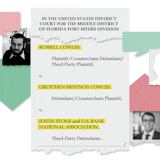Minnesota had all the ingredients for a severe influenza season this winter, but Thursday's weekly state update suggests it is escaping with less damage than expected.
Only 19 flu-related hospitalizations were reported in the week ending Jan. 28, down from a peak of nearly 600 per week in mid-November, according to the weekly report. The 142 confirmed flu-related deaths so far put Minnesota behind the trajectory of some of its worst flu seasons.
The surprise early start to the flu season this fall had experts worried, because the two prior seasons had been mild and a low vaccination rate left Minnesotans with diminished immune protection. Dr. Frank Rhame, an Allina Health virologist, said he feared the worst after that surge, but the flu season now appears to be early rather than severe.
"It's not like there have been a lot of twists and turns" in influenza activity, he said. "It's done the standard things, it's just that it's done them two months earlier."
Influenza has confounded expectations for the past four years, even before the COVID-19 pandemic. "A" strains of the influenza virus normally dominate in Minnesota, but the 2019-2020 winter featured mostly milder "B" strains. The next two seasons involved very little flu activity at all — and only 61 flu-related deaths combined — as people wore masks, practiced social distancing and took other steps to protect against severe COVID-19 levels.
COVID-19 levels by comparison have been low this winter — potentially leaving room for influenza to spread. The 404 COVID-19 hospitalizations on Tuesday compared with 1,371 on the same date last year, when a fast-spreading omicron variant of the coronavirus had fueled a new wave of pandemic activity, according to the state's weekly update.
But health officials warned that influenza is always capable of a second wave and that COVID-19 hasn't gone away.
The latest sampling showed substantial increases in coronavirus material in wastewater in certain parts of the state, according to results through Sunday published by the University of Minnesota. Viral levels reported in central and southwestern Minnesota were at their highest since August.



